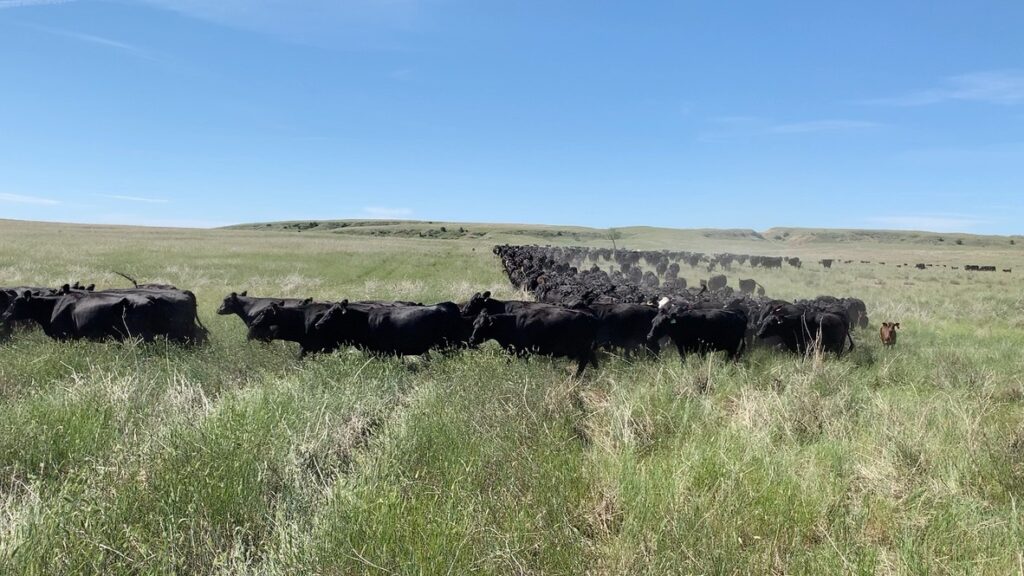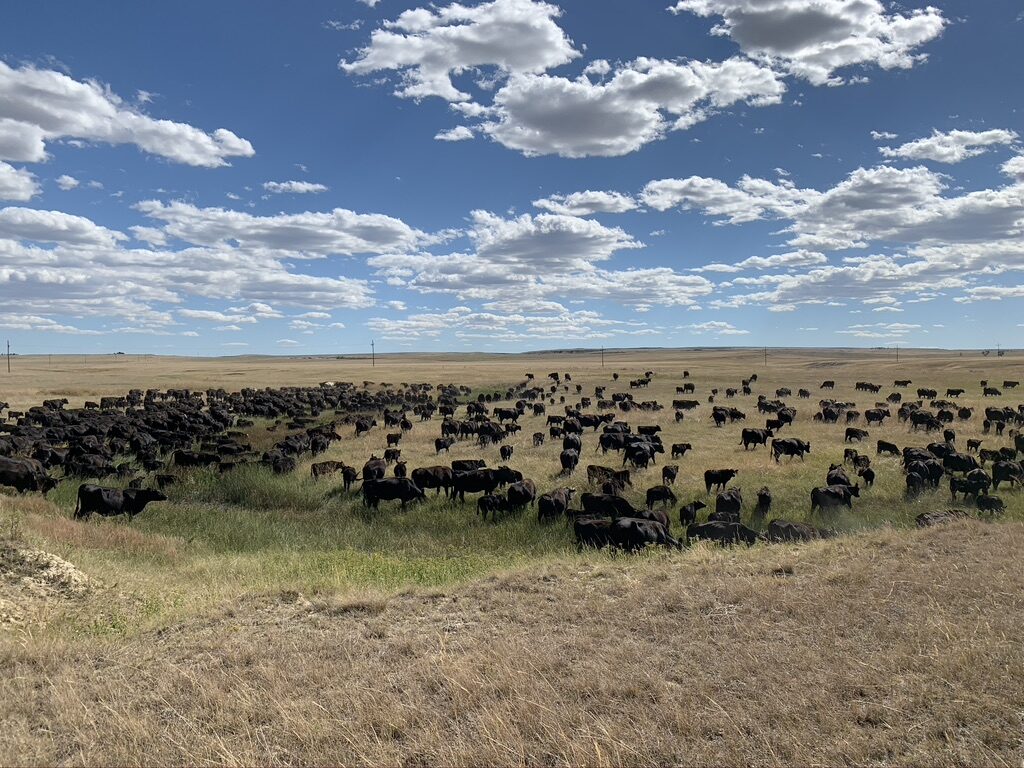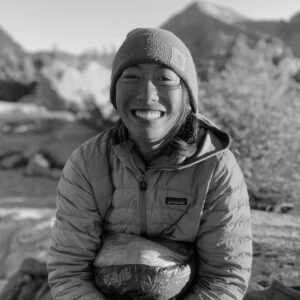“We’ve all chosen to do ranching the hard way” a rancher chuckles through the small illuminated rectangle on my computer’s desktop. My project partner, Laura González Mantecón, in the adjacent rectangle on Zoom asks him what he means by that. They’ve all chosen in one form or another to adopt practices that demand a lot more work from them – moving cattle more frequently, constructing more fencing to control grazing, monitoring the health of their land and attending various far-off trainings. While each of them does some iteration of these practices, they all agree that “doing ranching the hard way” has had immense benefits on the health of their land and viability of their operations.
The three ranchers we have on the video call are participants in a pilot project for the Range Monitoring Group (RMG), a collaborative of ranchers, scientists and non-profit conservation groups that is focused on improving rangeland health and management in Central Montana. Our research team has partnered with RMG to identify key indicators of rangeland health, found through monitoring, that are relevant and applicable for these Central Montana ranches. We are also working directly with ranchers to document their personal experiences with monitoring, the impact monitoring and information sharing amongst each other is having, and how that might change their management practices.

Throughout the interview, I found myself frequently referring to “doing ranching the hard way” as holistic management. Based on what they had described, it seemed to align with my understanding of Alan Savory’s Holistic Range Management – a specific set of practices and theories that he developed as a means to restore grasslands. As I re-watched the recordings of the interview, it appeared as though several of the ranchers were hesitant to fully affirm that they were doing holistic management since that term actually has a specific set of practices attached to it. I discovered that I’m not the only one who’s made this mistake and that it actually is a common challenge when doing research with ranchers in classifying and understanding their practices. For my own learning I wanted to take a deeper dive into these terms – Holistic Range Management, Holistic Planned Grazing, regenerative grazing and sustainable grazing – that so often get thrown around synonymously in hopes of bringing some clarity to the work we’re doing.
Holistic Range Management (HRM) – HRM is associated with Alan Savory and is often called the Savory Grazing Method. The term Holistic Management is even trademarked for the purpose of certification. While surrounded by some controversy over its efficacy, this approach was developed as a way to help regenerate degraded rangelands and the livelihoods of those working the lands. It takes a systems approach to managing land and has a set framework that integrates financial, infrastructure, grazing and land management elements into management strategies. [1]
Holistic Planned Grazing (HPG) – HPG is more specific and refers to the actual practice of grazing. The major tenet of HPG is high-intensity short-duration grazing rotations, which aims to mimic how grazers historically utilized the land with pressure from predators. It generally requires a lot more work from the ranchers end by requiring more fencing to create those intensive grazing units and more herding to move cattle between these units. [2]
Sustainable grazing – This doesn’t refer to any particular method, but refers more to the act of seeking to maintain the condition of one’s land for multiple generations.
Regenerative grazing – In contrast to sustainable grazing, regenerative grazing intends to renew the productivity and growth potential of the land. While sustainable methods aim to maintain a steady state, regenerative grazing acknowledges the dynamic nature and finds techniques to restore the system. [3]
Continuous grazing – When cattle graze a pasture for long, extended periods of time with no or infrequent rest to the pasture from grazing. In contrast to HPG, this method of grazing requires low fencing costs and minimal daily management. [4]

With the new information, I’ve looked back at our first interview and now understand that many of the ranchers are intentionally and thoughtfully using a mix of these techniques that are tailored to fit their land, operations and priorities. The diversity in their approaches is necessary to be flexible and adaptable to constantly changing conditions, and therefore defies any simple categorization into the above definitions. The mix of methods that makes these ranches adaptable, also makes it challenging for scientists to research as it’s difficult to trace any response to any one management application. At the same time, it seems as though good management involves multiple types of knowledge in addition to science. These ranchers have an intimate understanding of their land and that shouldn’t be overlooked. We’re hoping that through this project we can assist in communicating and helping make the case that these ranching practices and sometimes even choosing to do it the hard way can be good for the land.
[1] Barton et al. 2020
[2] https://savory.global/holistic-management/
[4]https://grazer.ca.uky.edu/content/rotational-vs-continuous-grazing#:~:text=Continuous%20grazing%20is%20when%20cattle,is%20correct%2C%20acceptable%20animal%20gains.
Lani Chang, Research Assistant|Lani Chang is a Master of Environmental Management candidate at the Yale School of the Environment focusing on water and public land issues in the American West. In particular, she interested in understanding how to better integrate stakeholder engagement, local/indigenous knowledge, and creative science communication to achieve more equitable and sustainable outcomes. Having grown up in California and attended Colorado College for her BA, her interests have been heavily influenced through her time living, working, and recreating all over the West. See what Lani has been up to. | Blog

